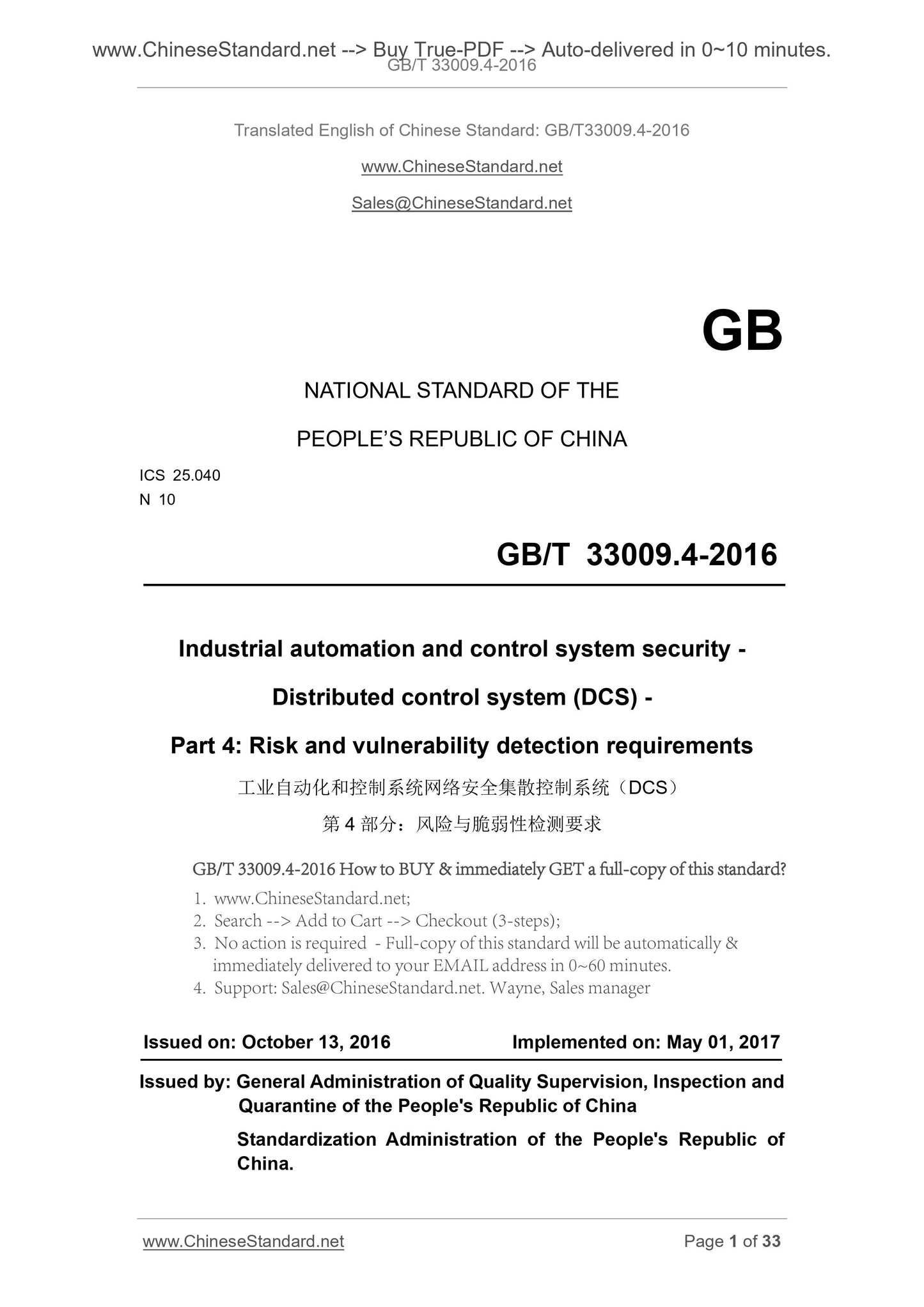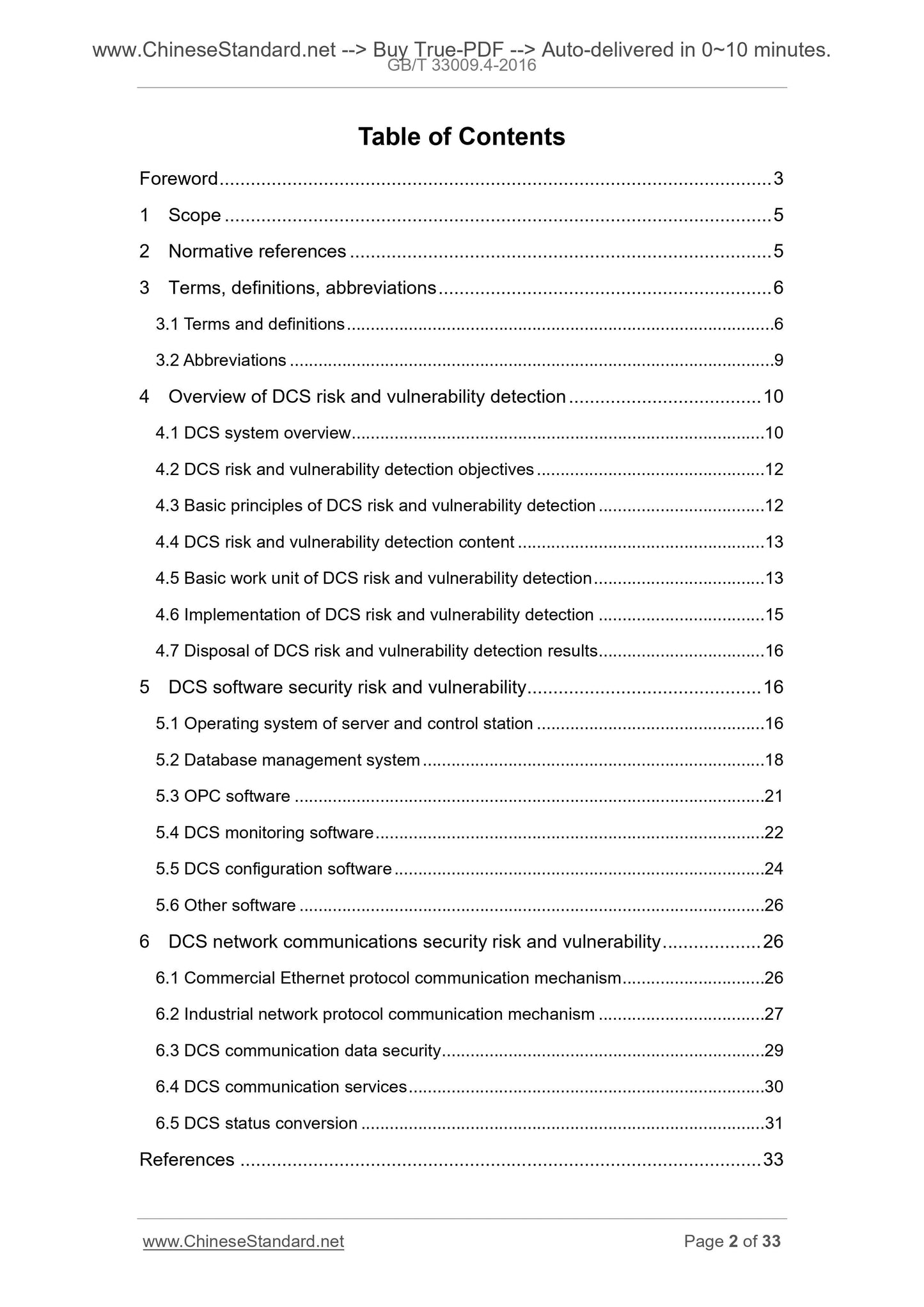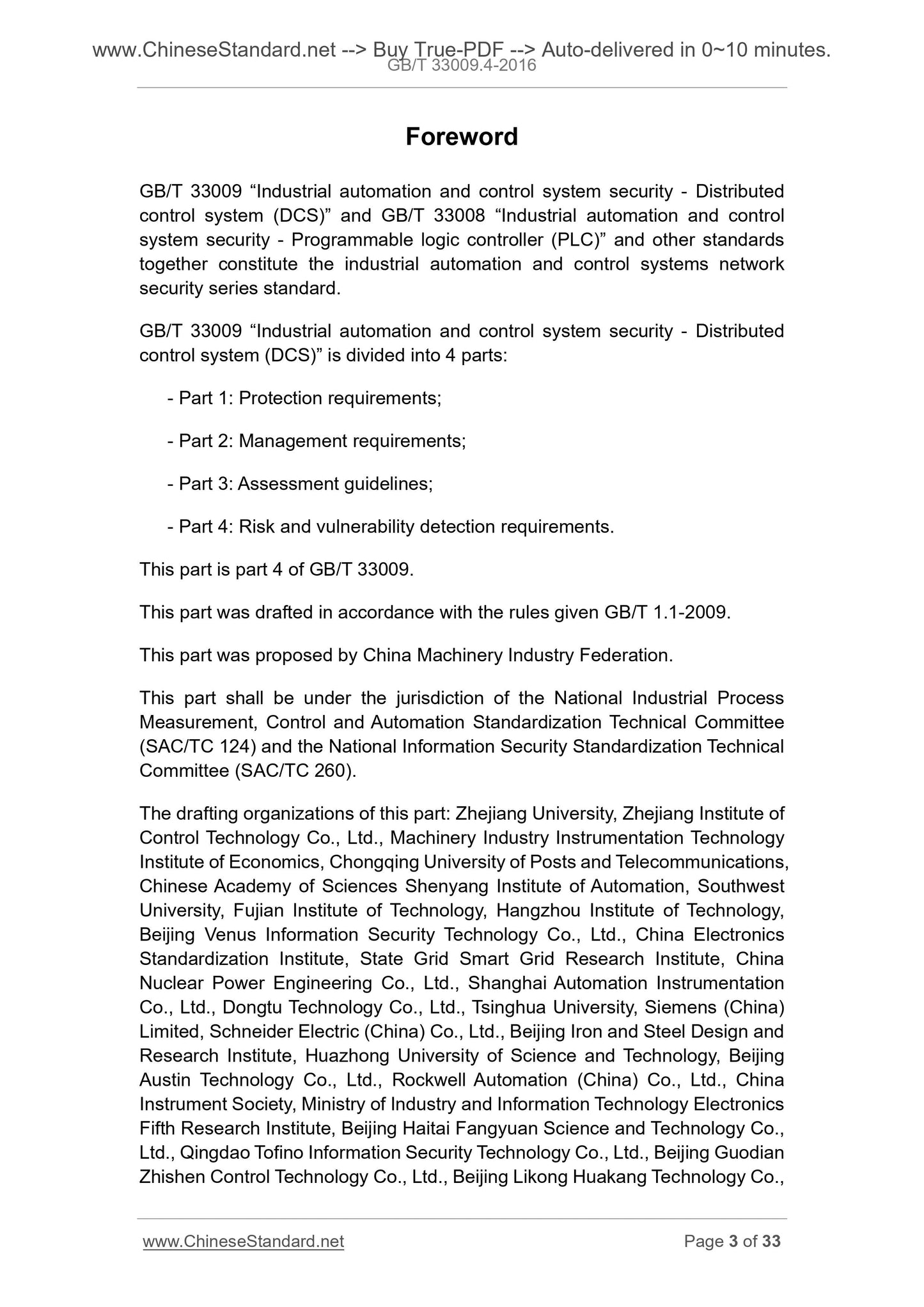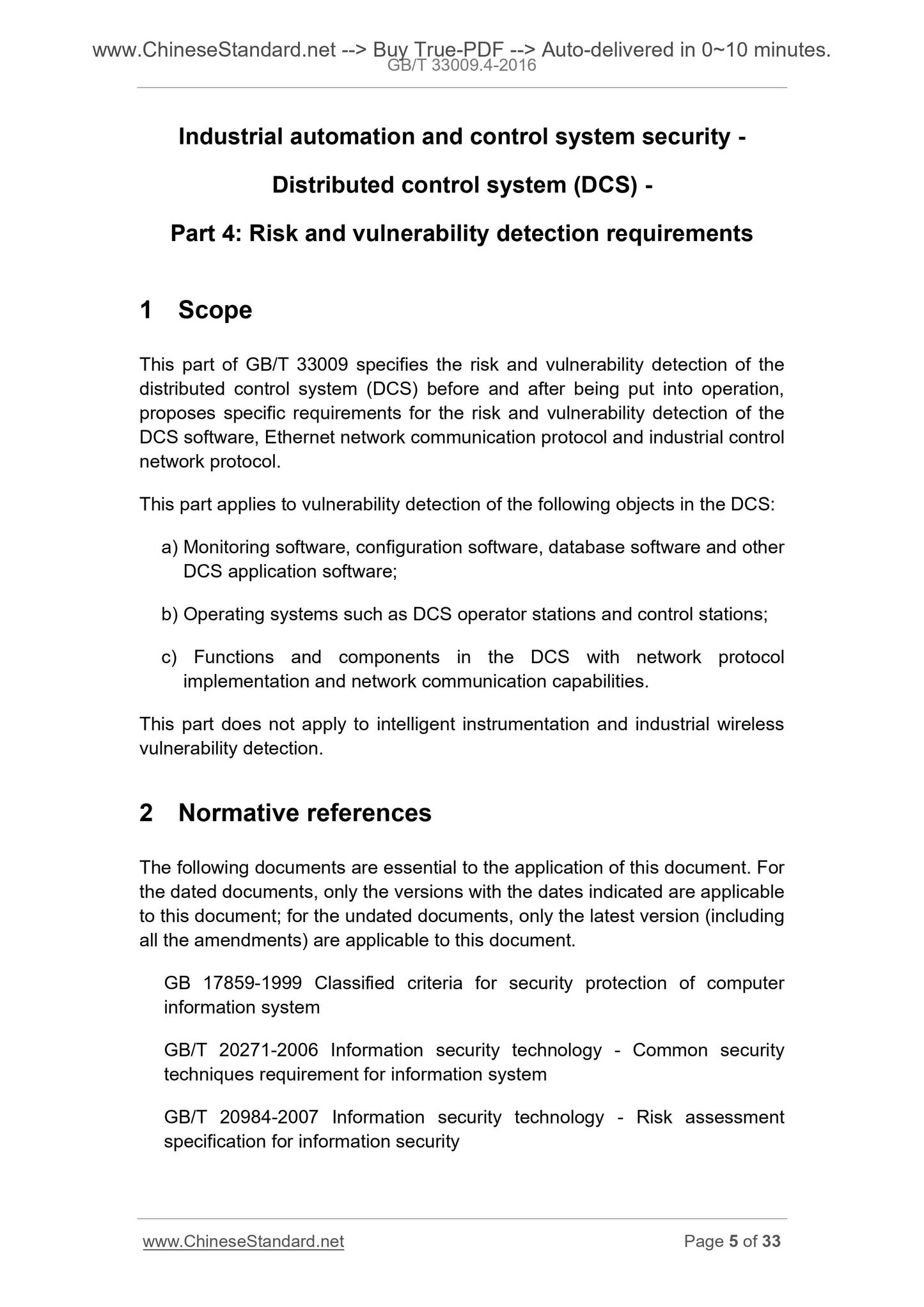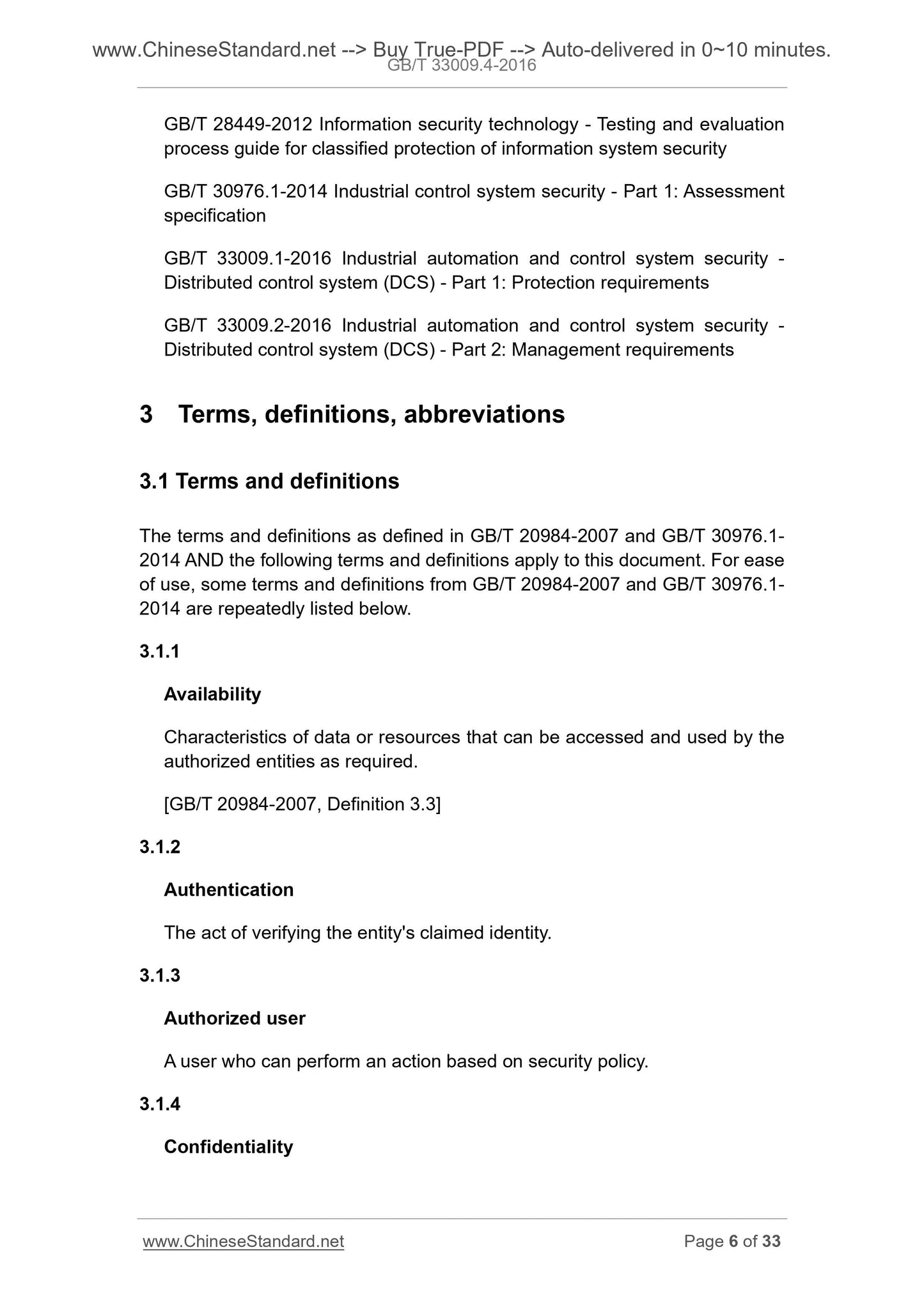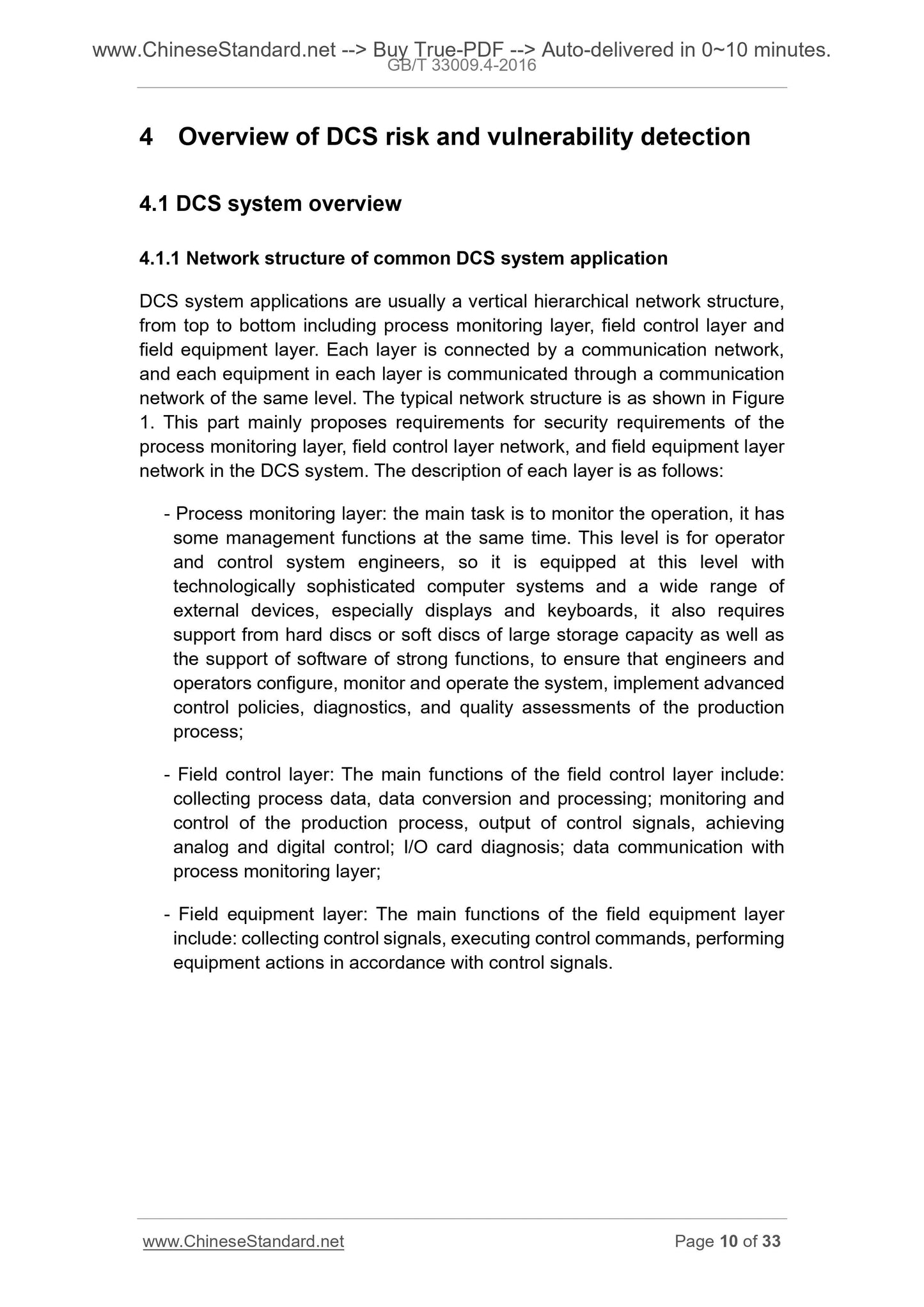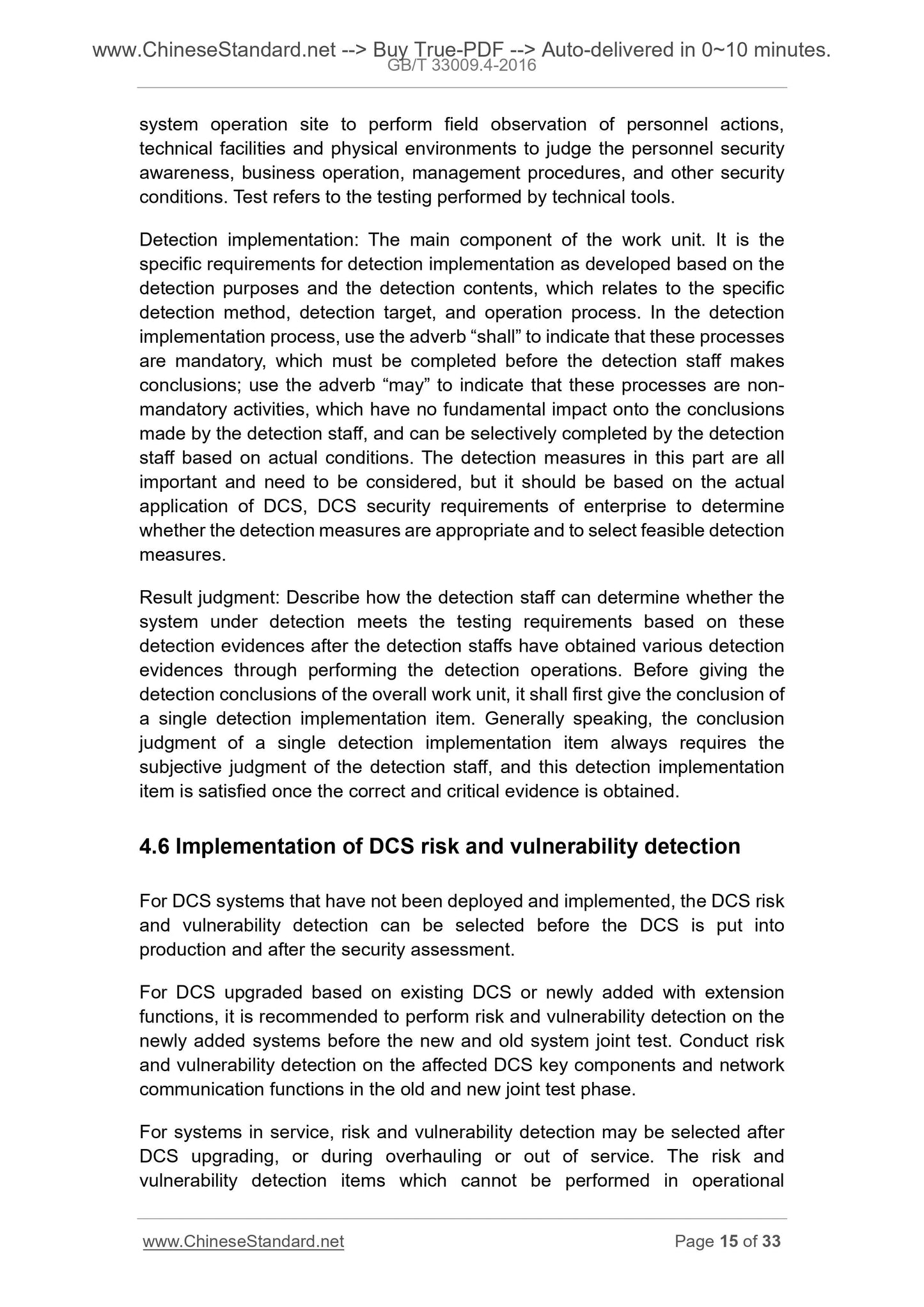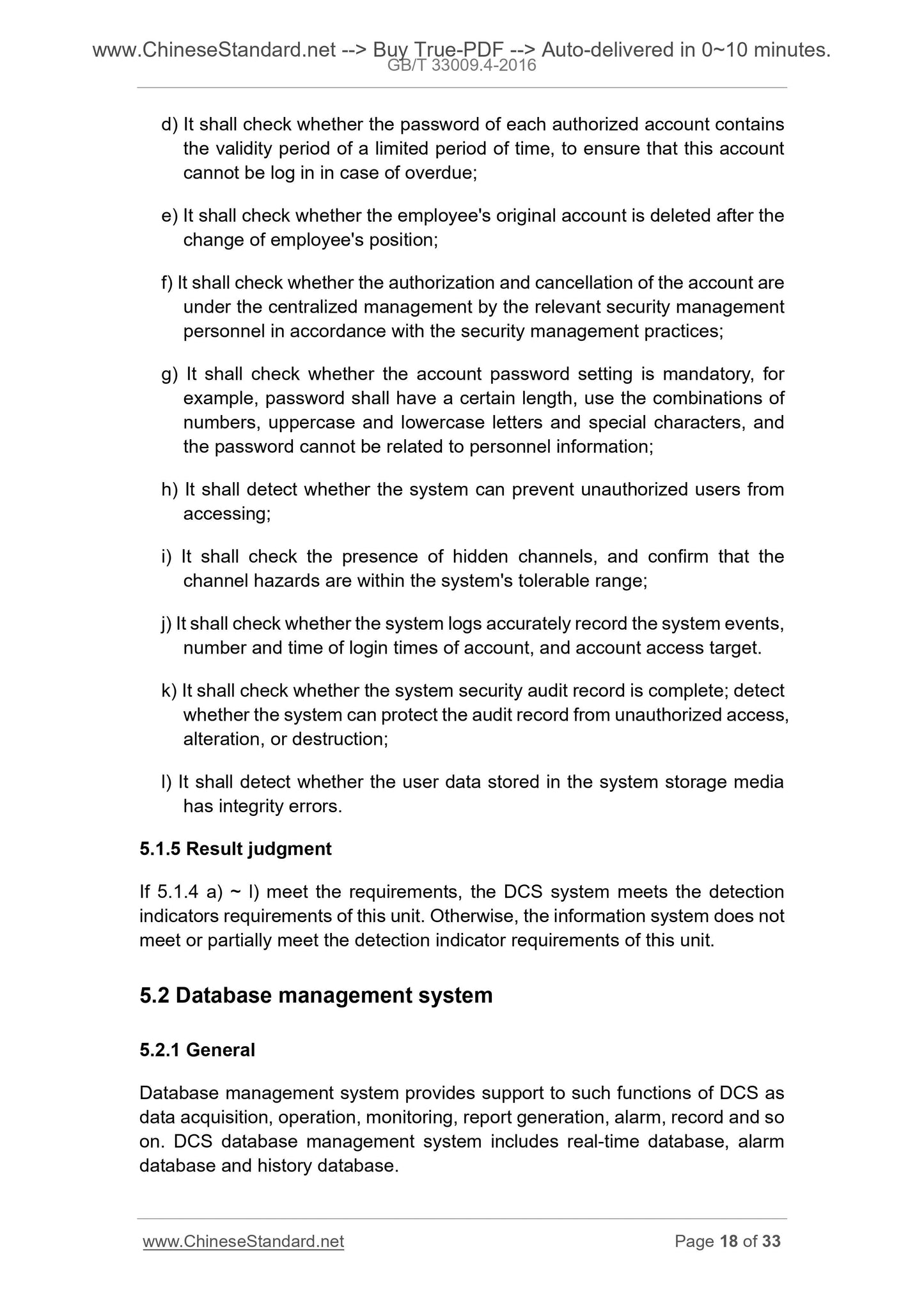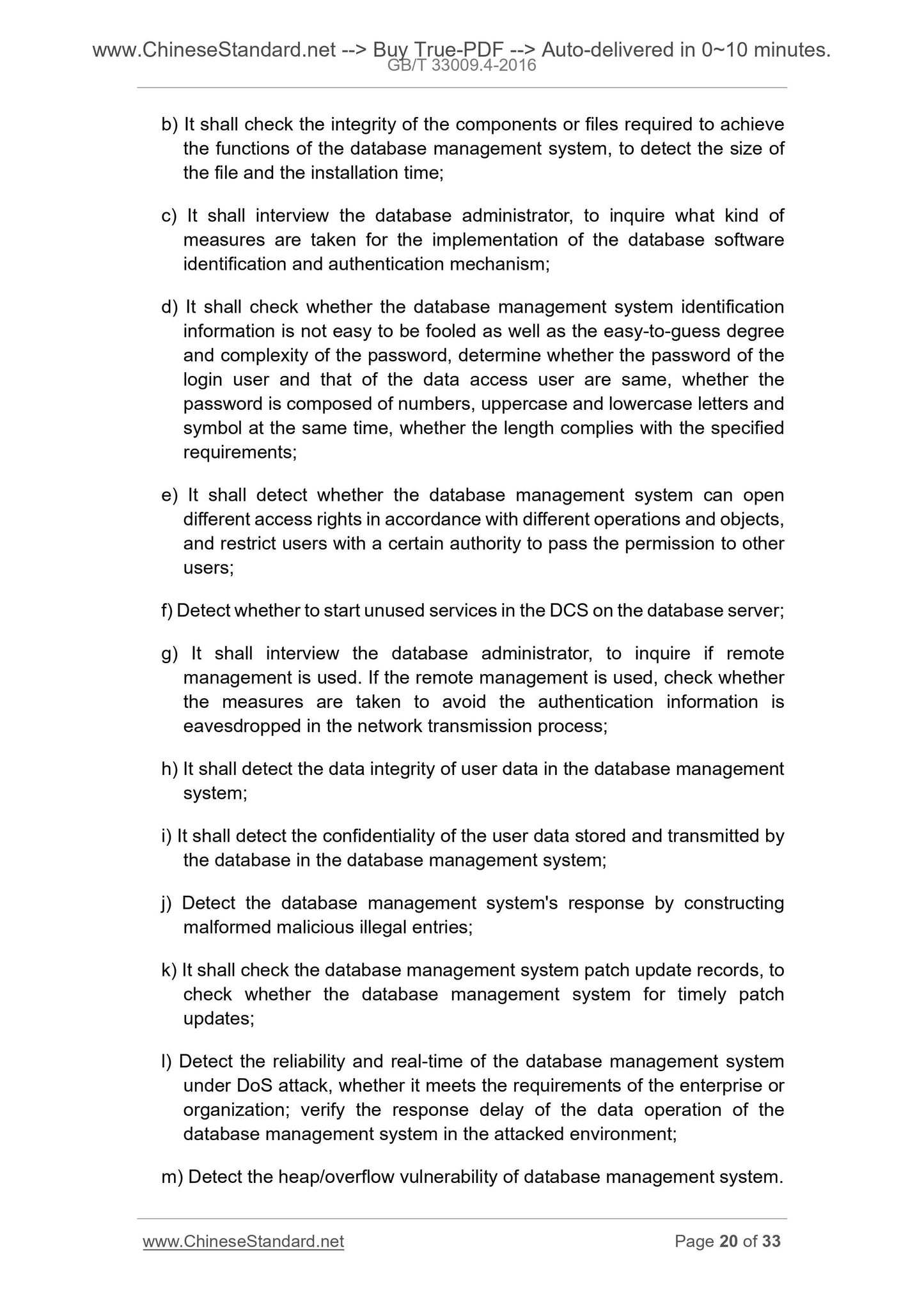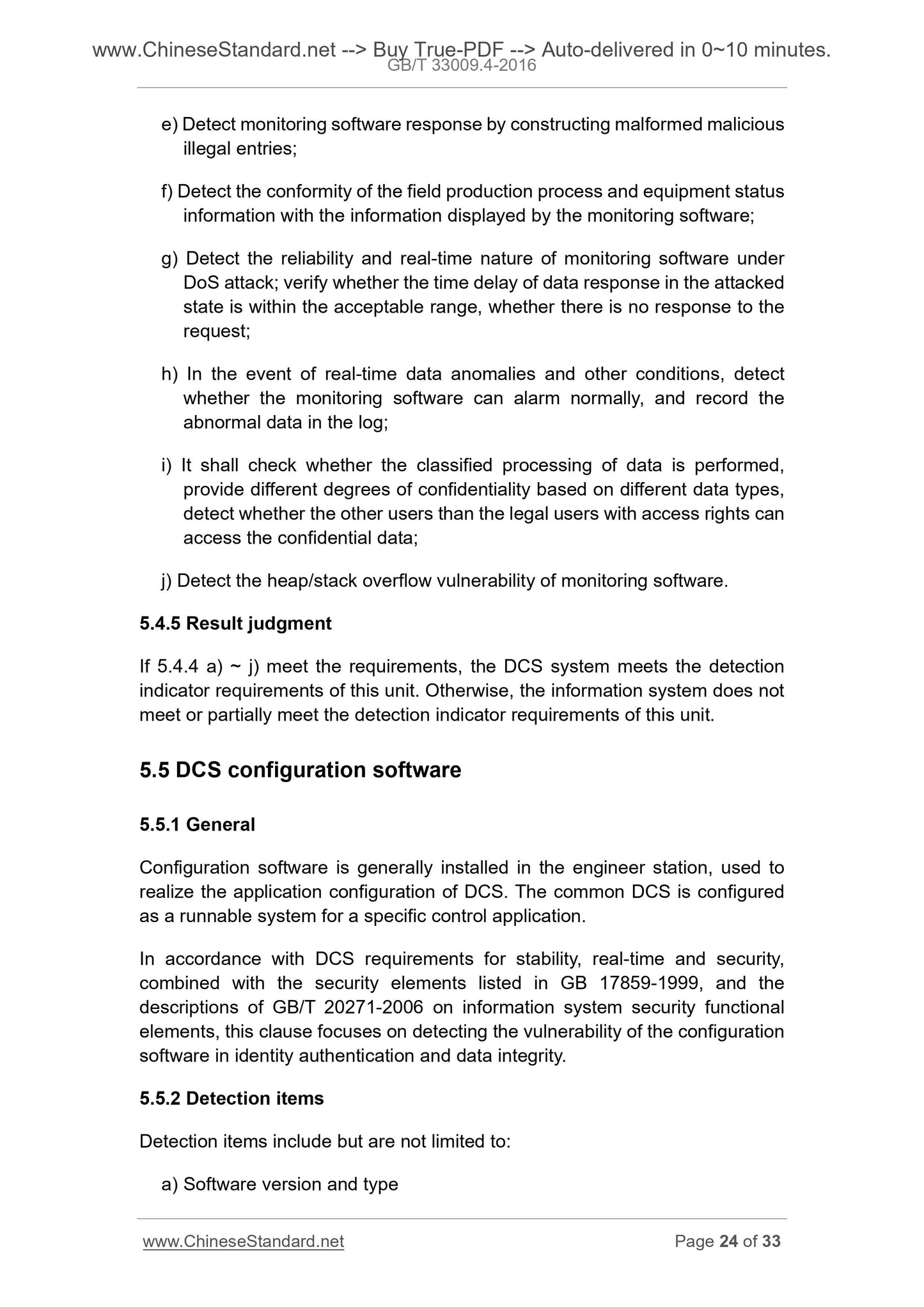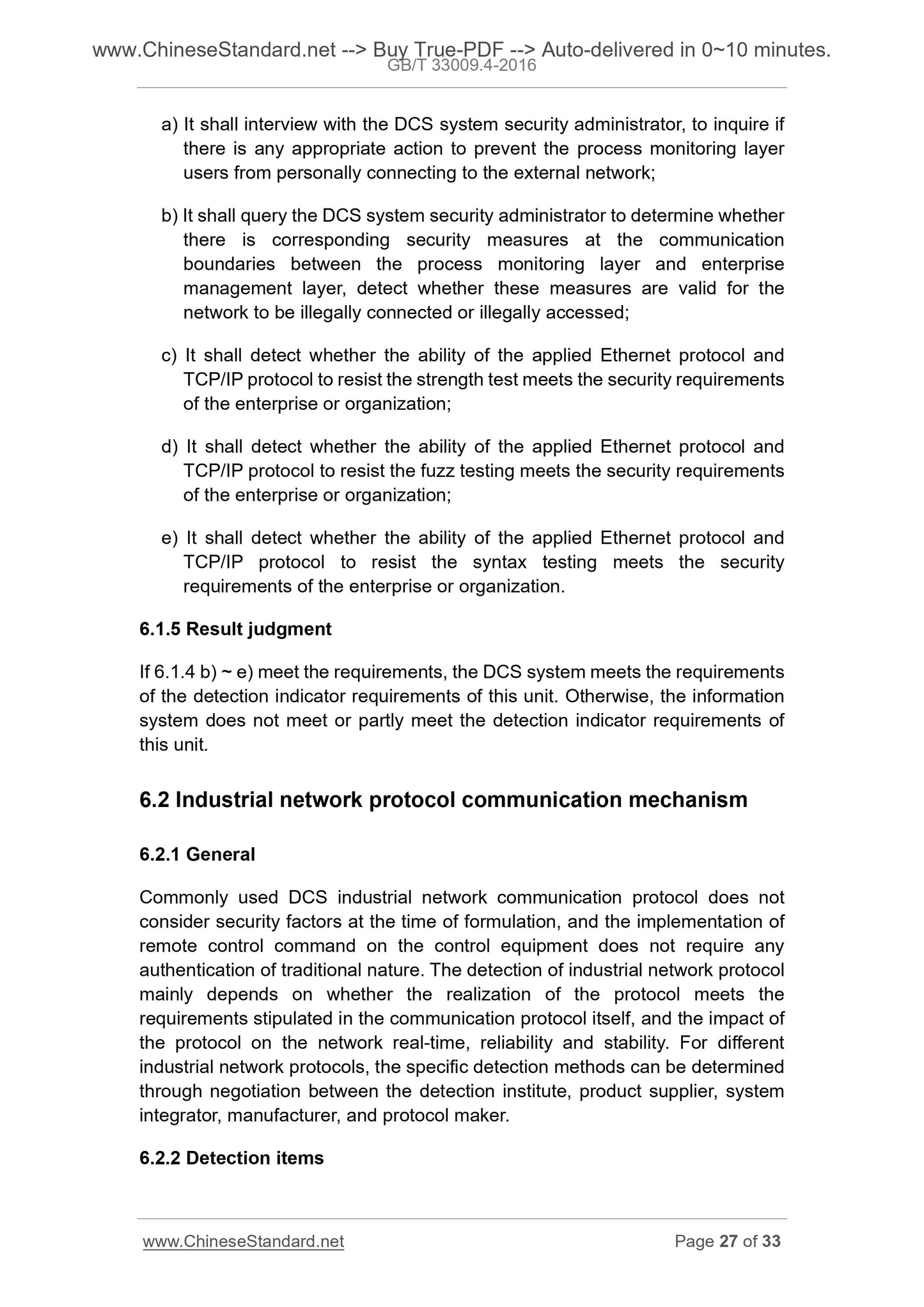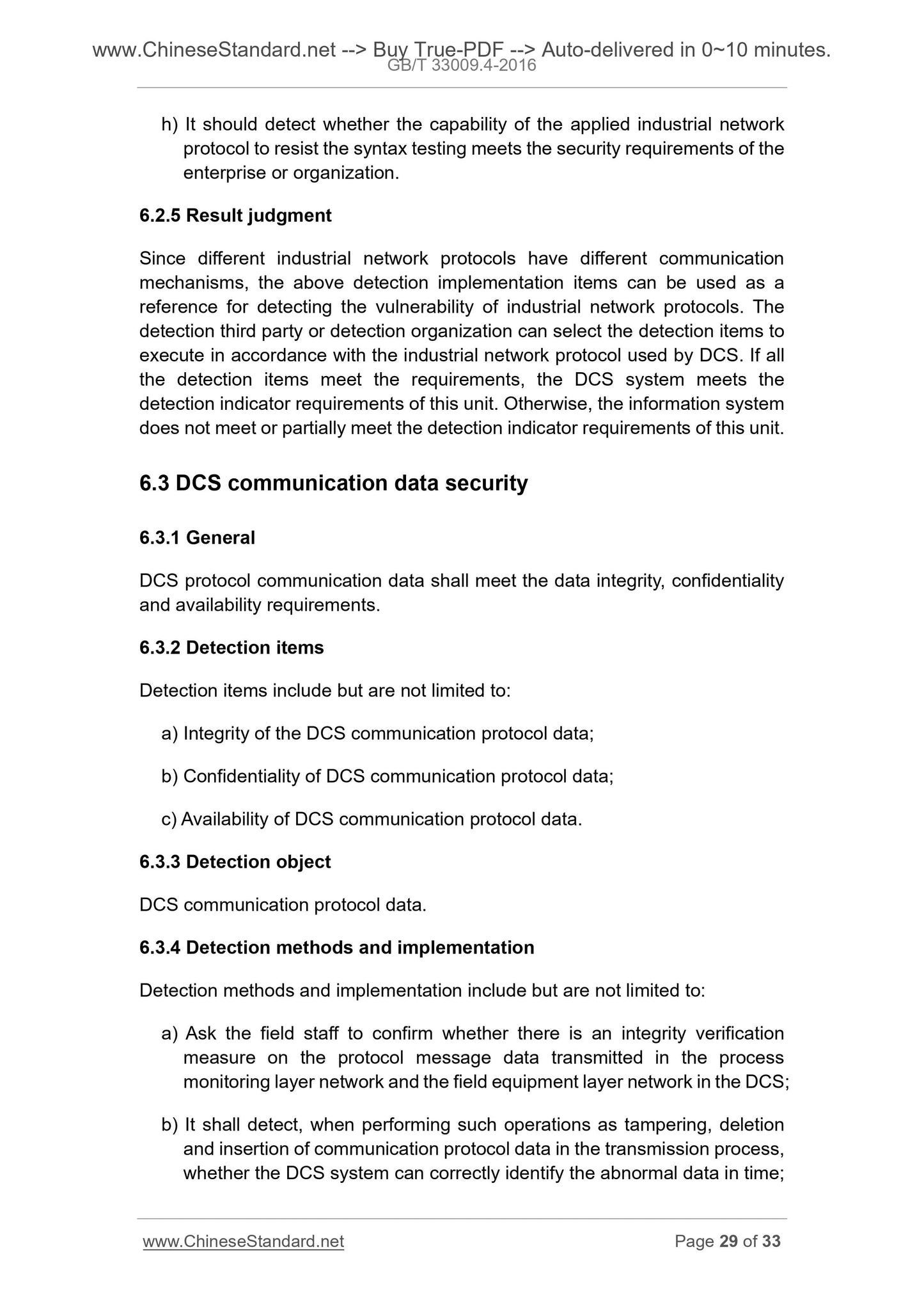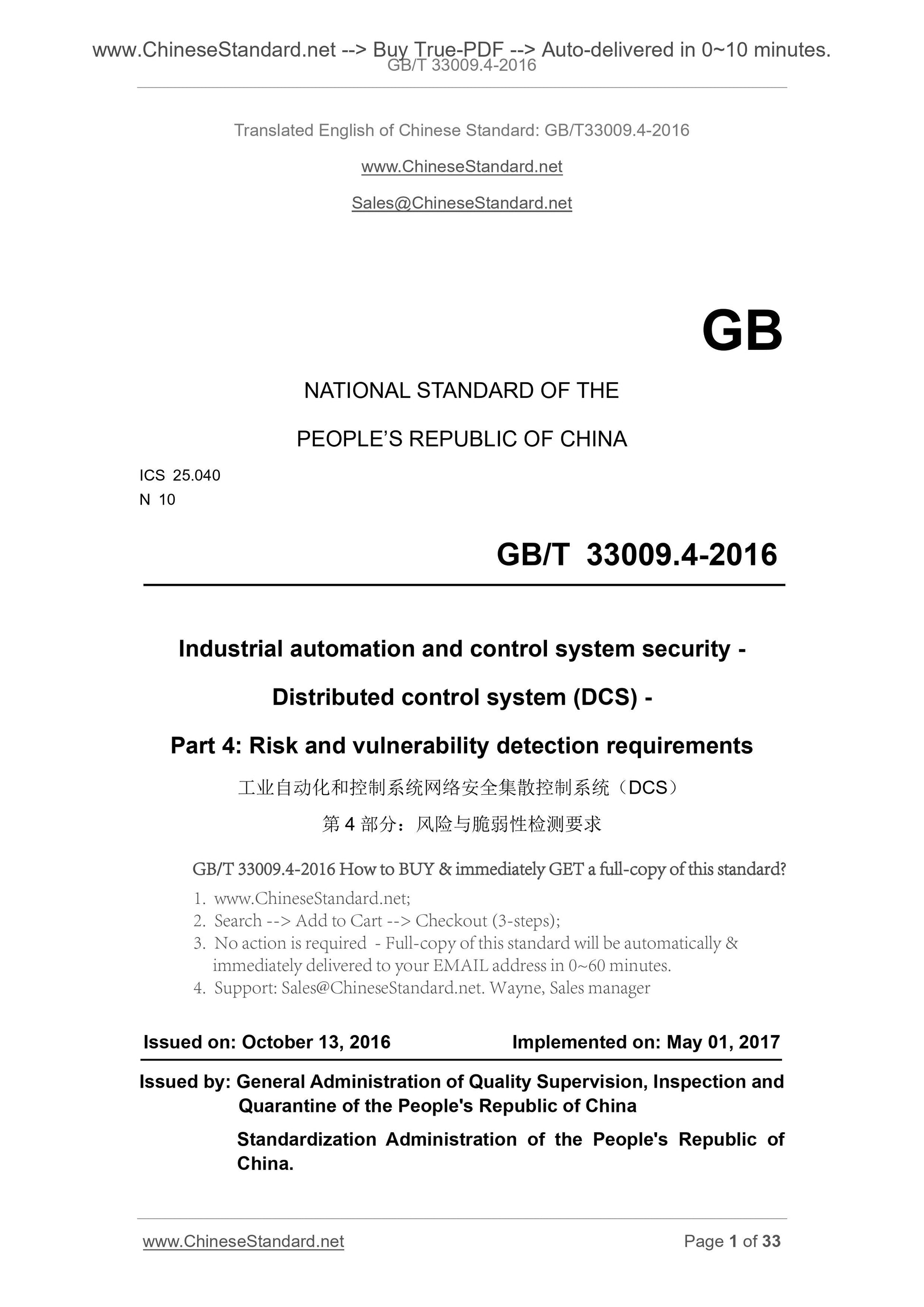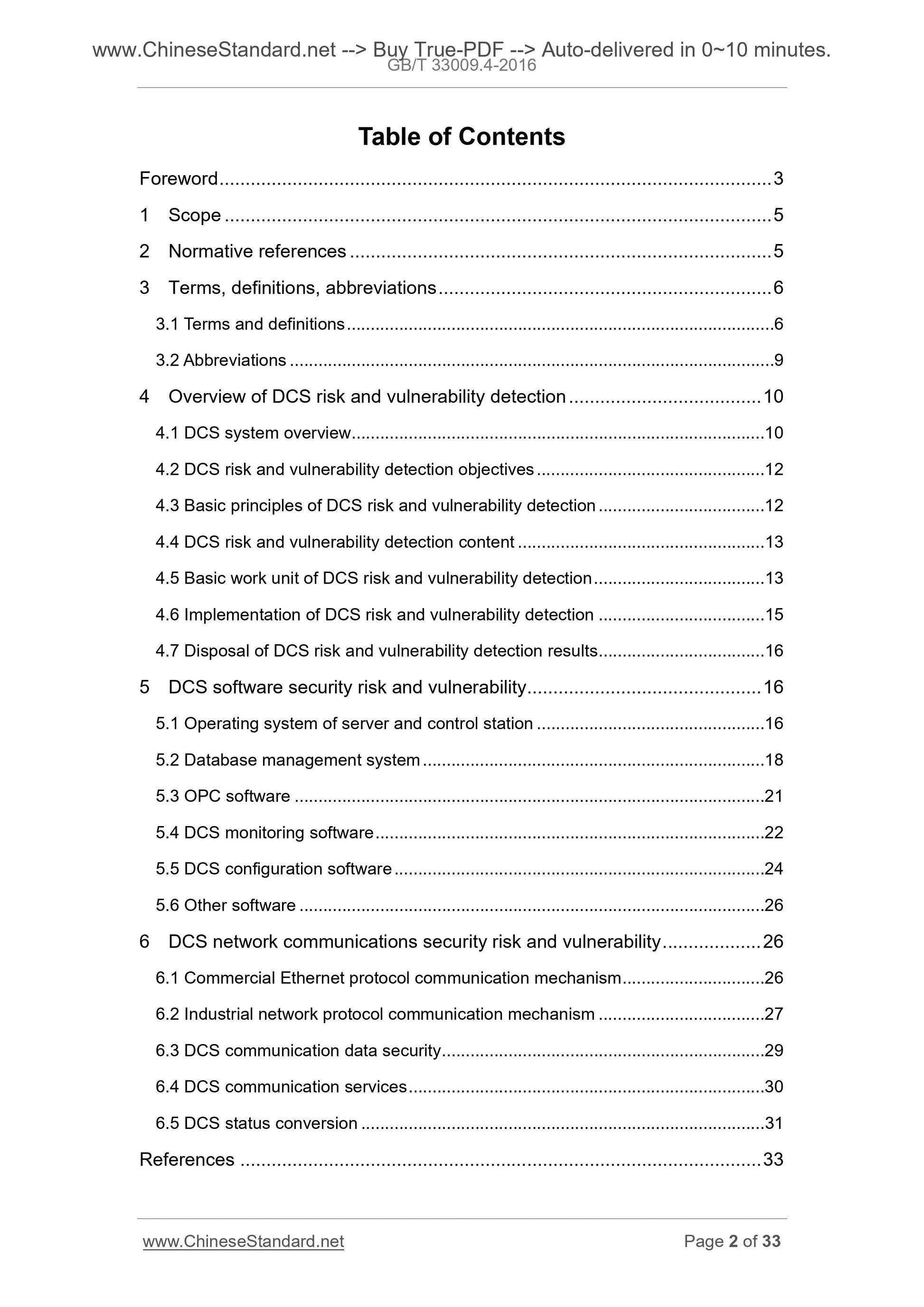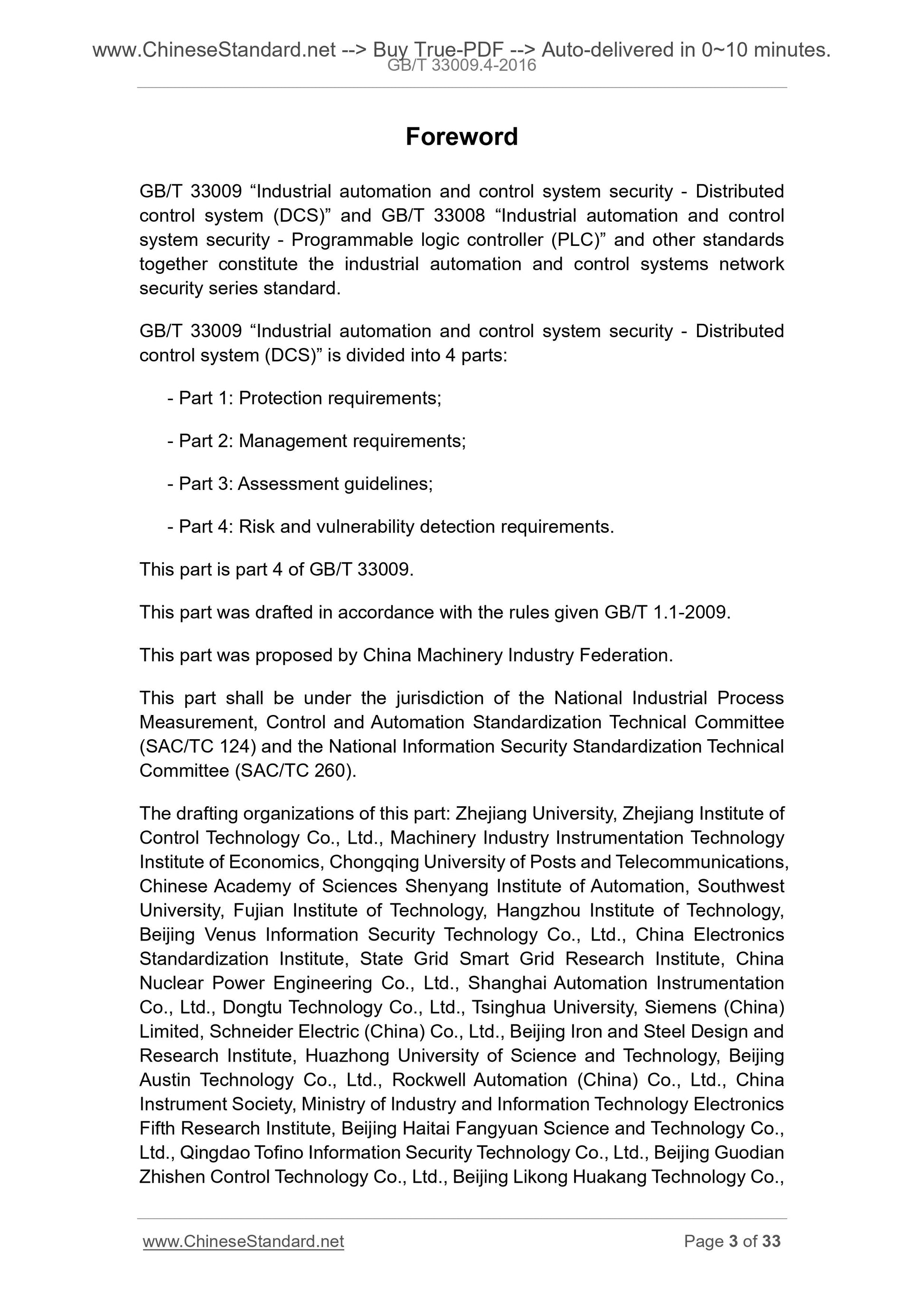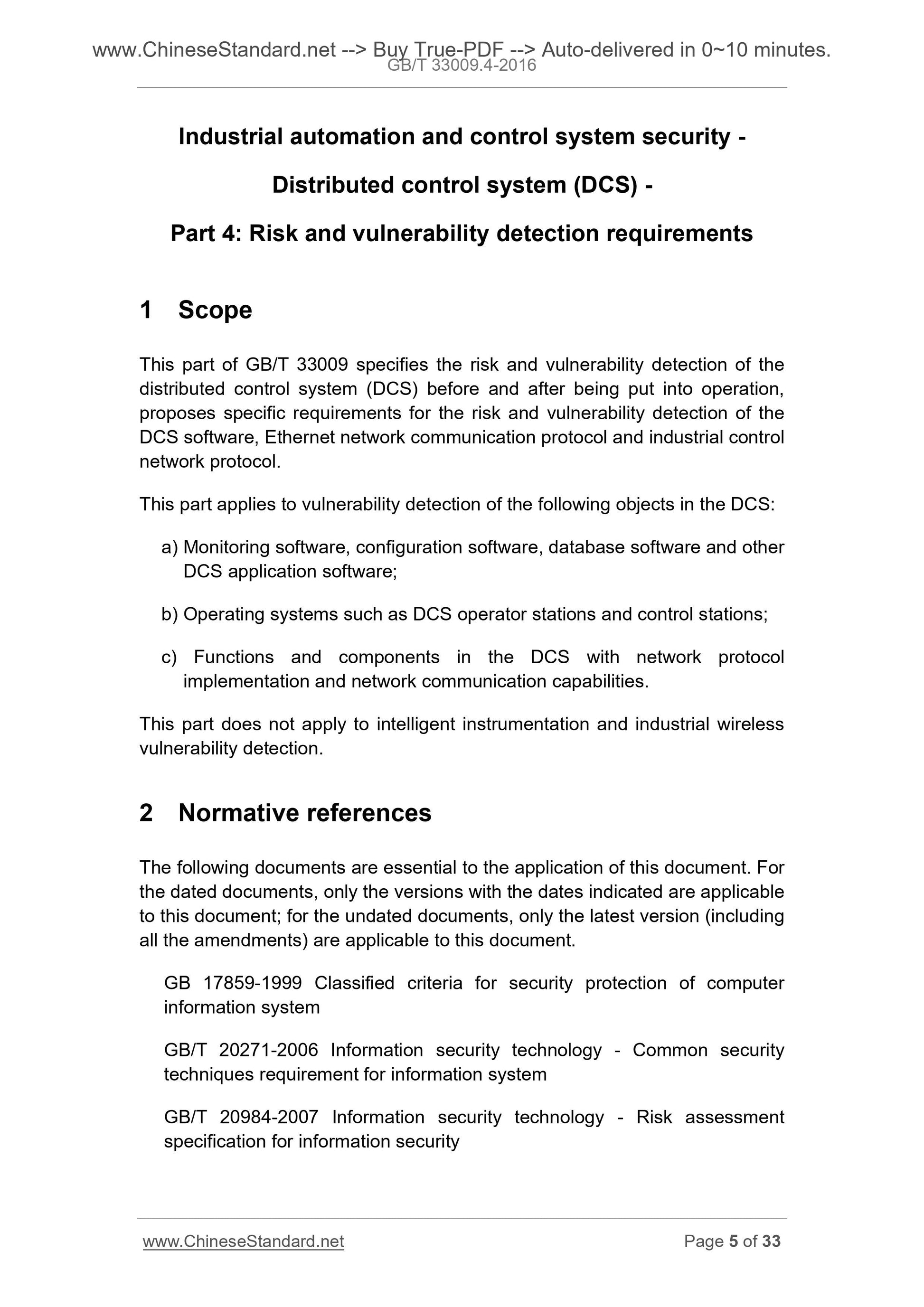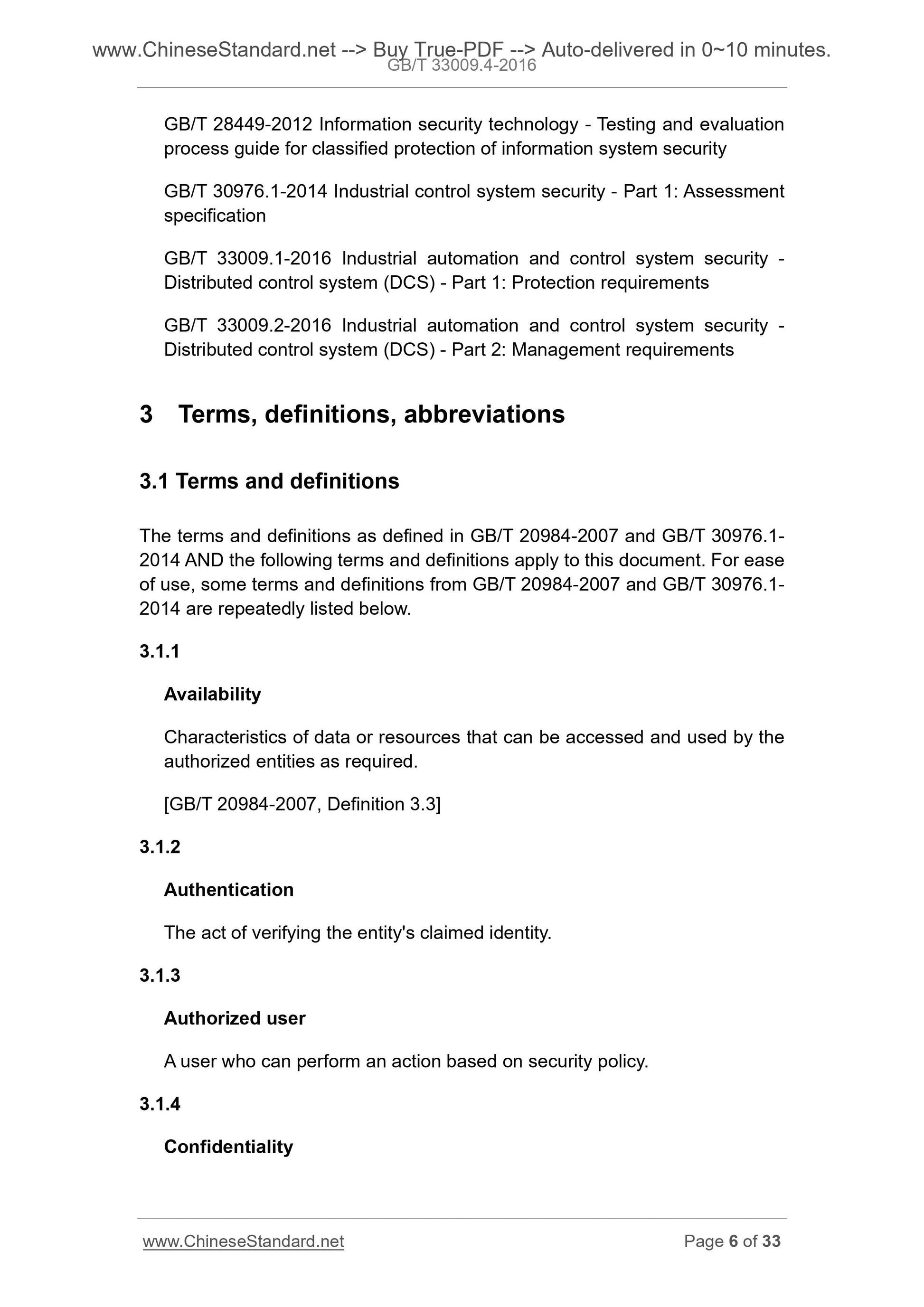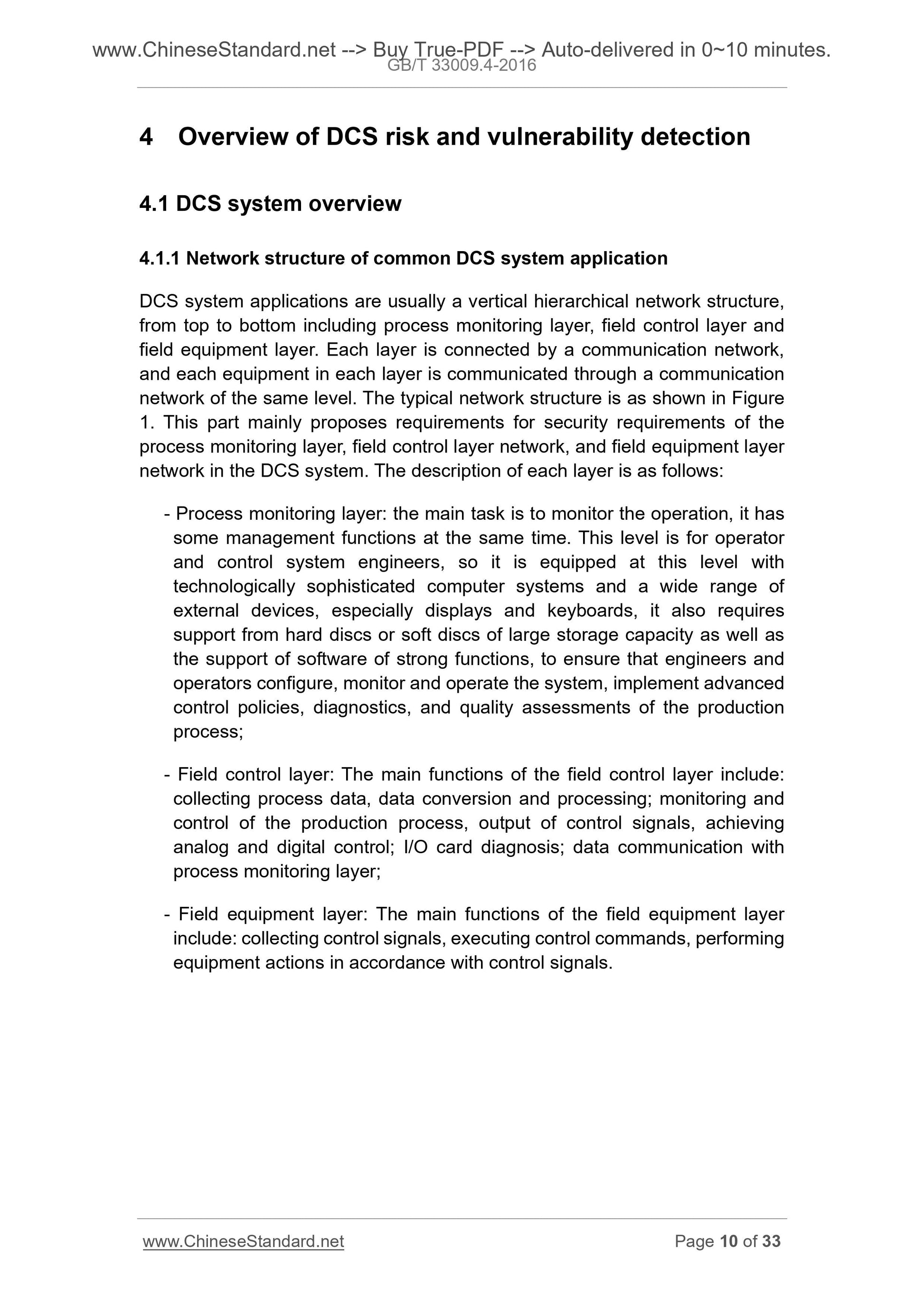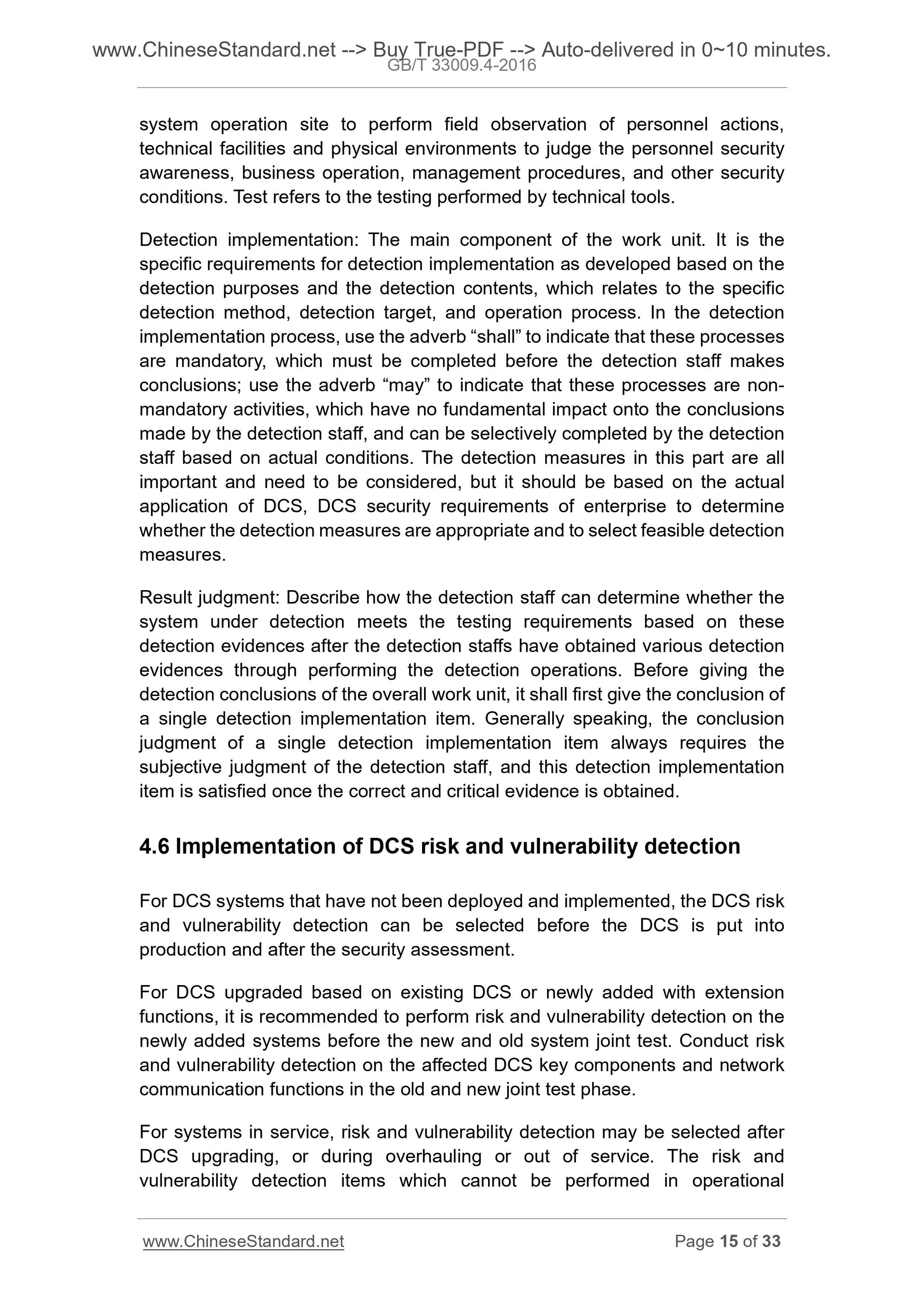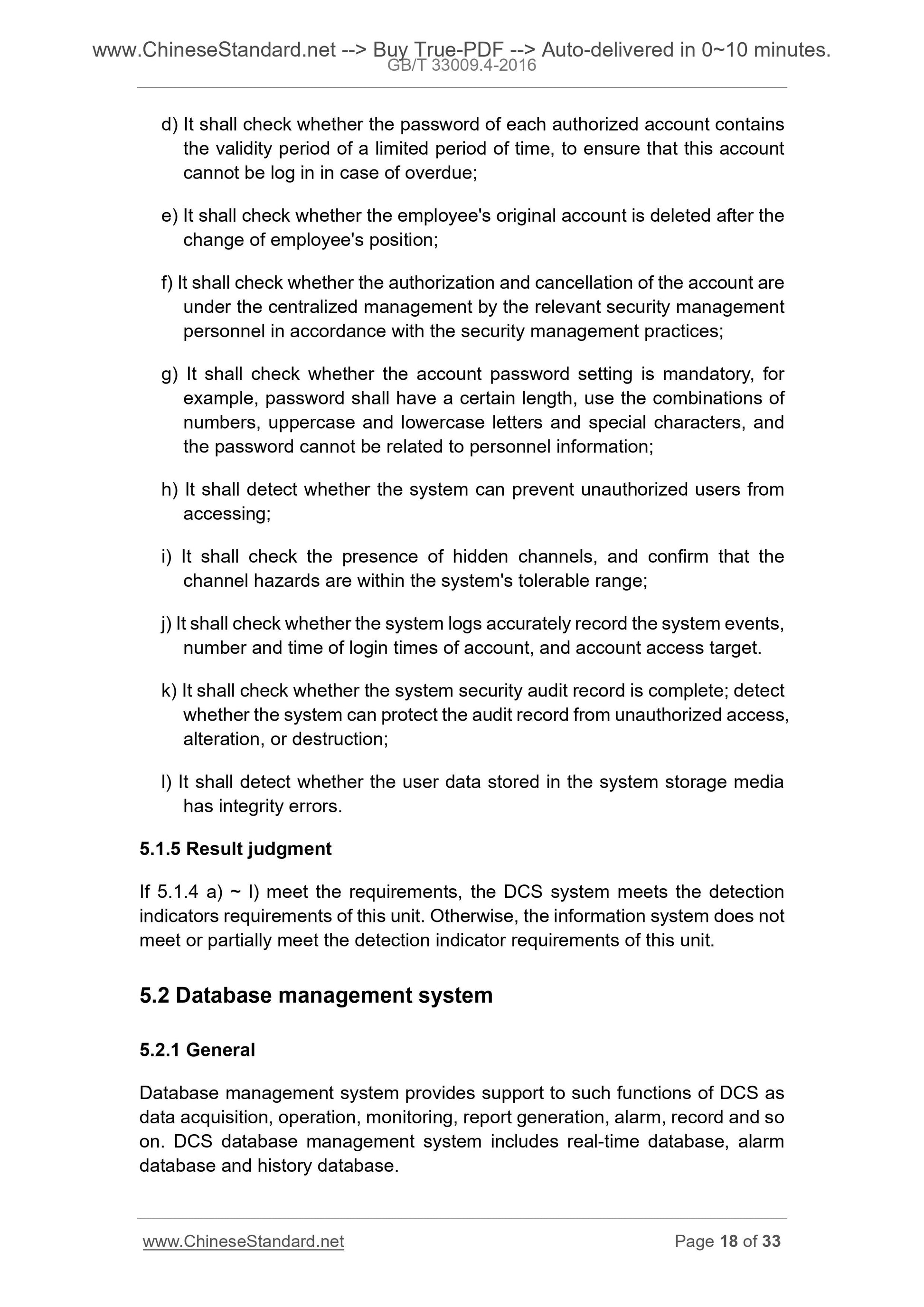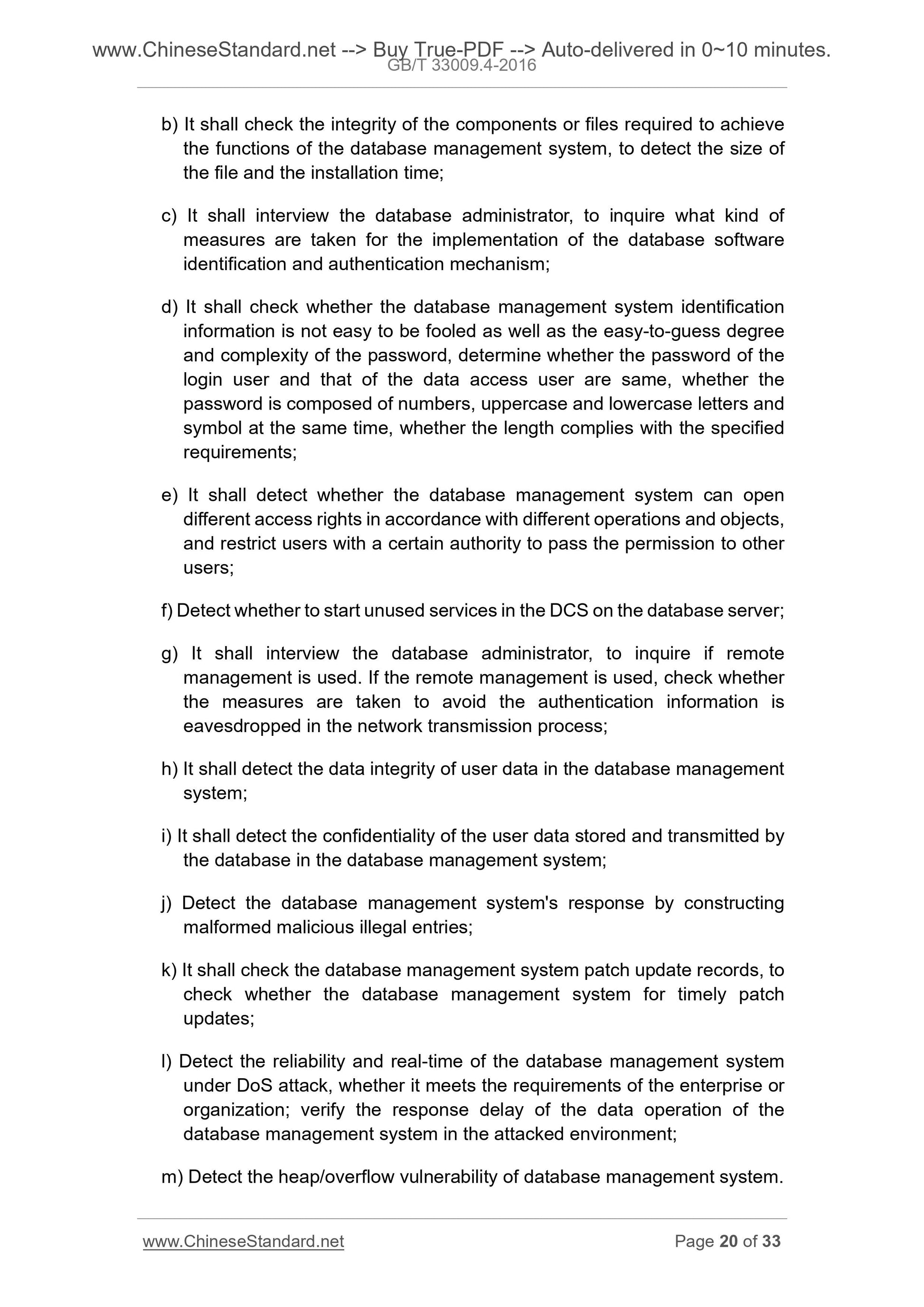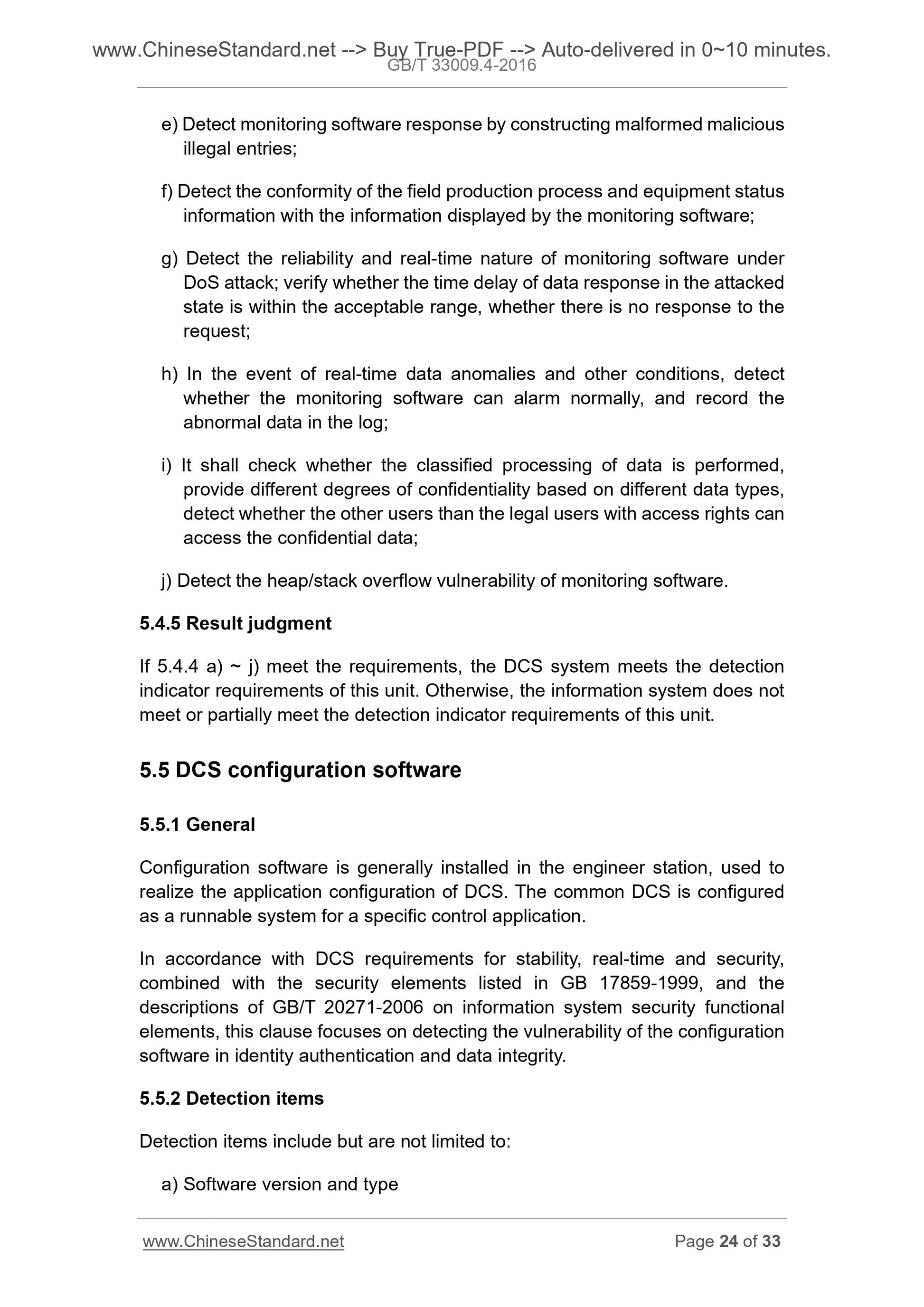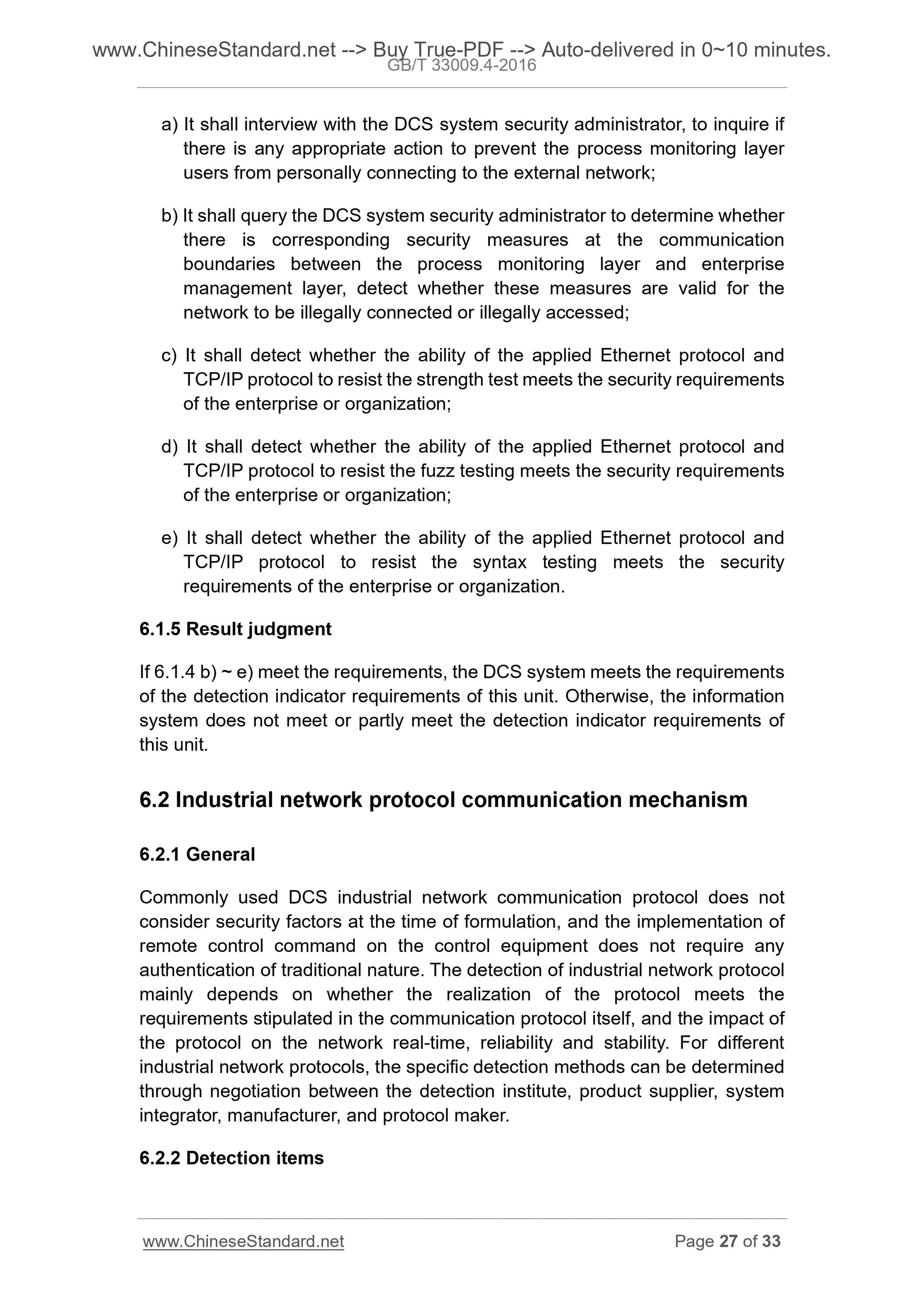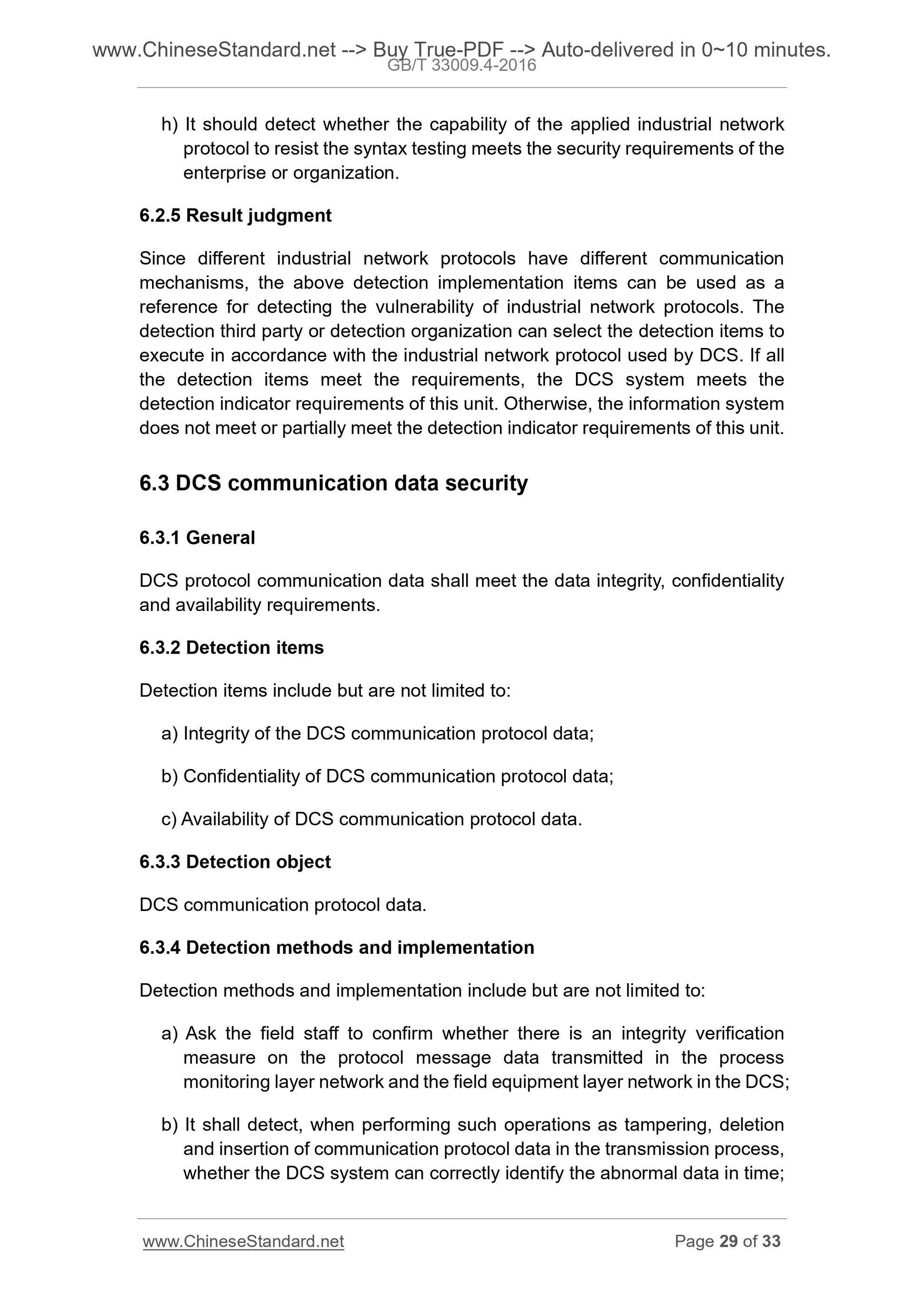1
/
of
12
www.ChineseStandard.us -- Field Test Asia Pte. Ltd.
GB/T 33009.4-2016 English PDF (GB/T33009.4-2016)
GB/T 33009.4-2016 English PDF (GB/T33009.4-2016)
Regular price
$150.00
Regular price
Sale price
$150.00
Unit price
/
per
Shipping calculated at checkout.
Couldn't load pickup availability
GB/T 33009.4-2016: Industrial automation and control system security - Distributed control system (DCS) - Part 4: Risk and vulnerability detection requirements
Delivery: 9 seconds. Download (and Email) true-PDF + Invoice.Get Quotation: Click GB/T 33009.4-2016 (Self-service in 1-minute)
Newer / historical versions: GB/T 33009.4-2016
Preview True-PDF
Scope
This part of GB/T 33009 specifies the risk and vulnerability detection of thedistributed control system (DCS) before and after being put into operation,
proposes specific requirements for the risk and vulnerability detection of the
DCS software, Ethernet network communication protocol and industrial control
network protocol.
This part applies to vulnerability detection of the following objects in the DCS.
a) Monitoring software, configuration software, database software and other
DCS application software;
b) Operating systems such as DCS operator stations and control stations;
c) Functions and components in the DCS with network protocol
implementation and network communication capabilities.
This part does not apply to intelligent instrumentation and industrial wireless
vulnerability detection.
Basic Data
| Standard ID | GB/T 33009.4-2016 (GB/T33009.4-2016) |
| Description (Translated English) | Industrial automation and control system security - Distributed control system (DCS) - Part 4: Risk and vulnerability detection requirements |
| Sector / Industry | National Standard (Recommended) |
| Classification of Chinese Standard | N10 |
| Word Count Estimation | 20,271 |
| Date of Issue | 2016-10-13 |
| Date of Implementation | 2017-05-01 |
| Regulation (derived from) | National Standard Announcement 2016 No.17 |
| Issuing agency(ies) | General Administration of Quality Supervision, Inspection and Quarantine of the People's Republic of China, Standardization Administration of the People's Republic of China |
Share
